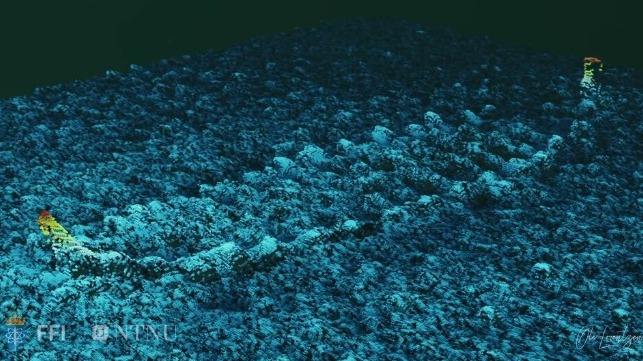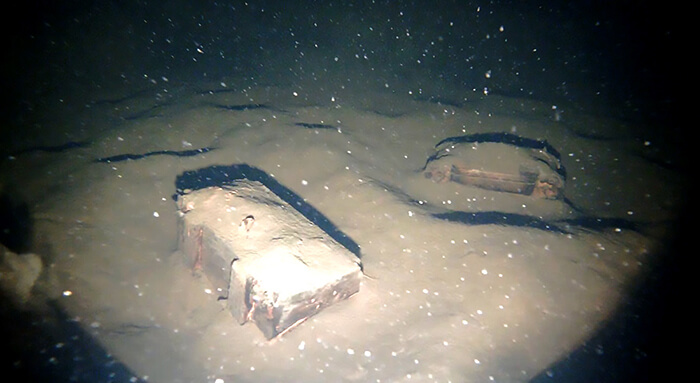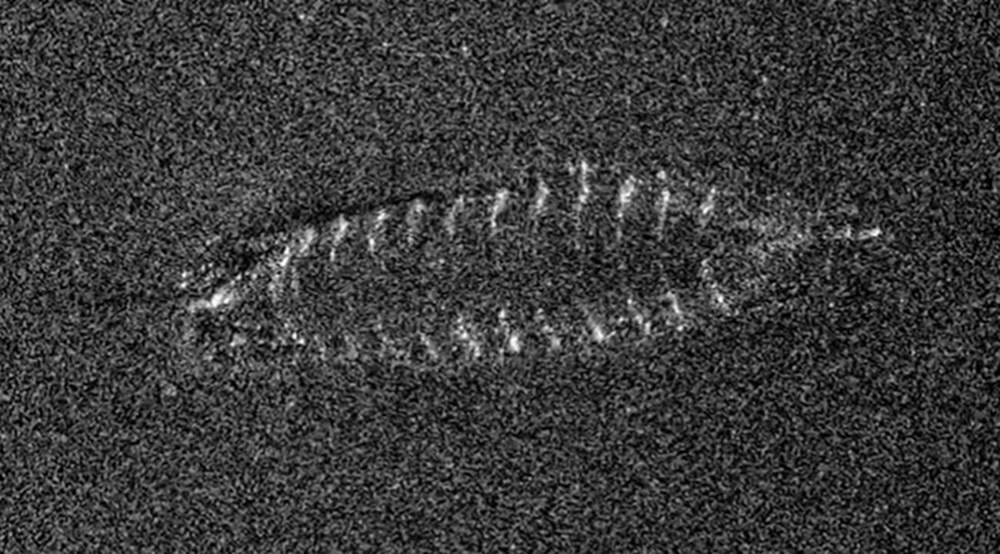Exploring the Wrecks and Ammo Dumps of Norway's Largest Lake

[By Mads Wang-Svendsen]
It took just eight years from U.S. President John F. Kennedy sharing his ambitions to put a man on the moon until Neil Armstrong stepped out of the Eagle spacecraft in 1969 and made history.
Experts in everything from medicine and biology to computer science and engineering were involved, and at its peak, NASA estimates that as many as 400,000 people contributed to making Kennedy’s vision a reality.
The first manned moon landing in history is therefore a good example of what can be achieved when expertise is mobilised across disciplines and work is focused over time.
This has led some people to ask why we don’t simply do the same when faced with major societal challenges like the current climate change and environmental crisis.
The answer probably lies in the fact that the challenges of our time differ significantly from the moon landing.
Many open-ended questions
“The moon landing had a very specific goal. As soon as the first humans set foot on the moon and were safely transported back to Earth, the mission was in many ways completed,” explains professor of applied ethics at NTNU, Siri Granum Carson.
She also points out that the moon landing was predominantly a technical achievement. Although it required contributions from a range of different disciplines, it was primarily a matter of technology.
This is not the case with the biggest challenges we face today: “When has sustainable management of a natural resource ever actually been achieved? What measures and initiatives are best suited for the transition to a low-emission society? And how do you get the people who will be affected in various ways by the development on board?” asks Carson.
These are open-ended and difficult questions. Questions that in many ways make the?challenges of our time far more complex than the moon landing.
“It is against this backdrop that we must try to understand Mission Mjøsa,” says Carson.
To what degree are the fish affected by pollutants? The project is broad and will study the entire ecosystem.
Has never been done in freshwater
Carson is acting head of one of the six research groups that make up Mission Mjøsa – a five-year research programme with an interdisciplinary approach that can in some ways be compared to the Apollo space programme.
Engineers and biologists are standing shoulder to shoulder with philosophers, social scientists and historians to ensure that Norway’s largest lake is safeguarded for future generations.
Mission Mjøsa has already received a lot of attention for its use of advanced ocean research technology that has never been used in fresh water before to map dumped ammunition.
For many years, it was believed to involve somewhere between 100 and 200 tonnes of ammunition. That was until NTNU, in collaboration with the Norwegian Defence Research Establishment, introduced Lake Mjøsa to the autonomous underwater vehicle Hugin. The underwater robot quickly discovered nearly 1000 Sidewinder air-to-air missiles – some ten to twenty times more than previously estimated.
Moreover, ammunition was not the only thing Hugin found. In the autumn of 2022, what may be Lake Mjøsa’s oldest known shipwreck appeared on Hugin’s sonar images, making international news headlines.
"The wreck, lying at a depth of 410 metres, was estimated to be as much as 700 years old, and video footage from remotely operated underwater drones has since confirmed that it is probably a very old ship of great cultural and historical interest.
And while efforts to date the wreck continue, a number of parallel research groups are now starting their work along the shores of Lake Mjøsa.

The underwater robot has found ammunition and explosives that have been dumped in Lake Mjøsa, in previously unknown sites. Photo: NTNU
Lake Mjøsa has it all
Lake Mjøsa is a highly exploited source of drinking water, a recreational resource, and a residential area for many people. However, we know surprisingly little about Norway’s largest lake. Even something as fundamental as how deep it is remains uncertain.
Lake Mjøsa also faces a long list of threats that will affect freshwater systems around the world in the future. Run-off from agriculture, blooms of harmful bacteria, and high levels of environmental toxins and microplastics are some of the best-known examples of these threats, but there are many more.
Terje Andreas Eikemo, professor of sociology at NTNU, believes this makes the lake an excellent starting point for understanding how we can ensure sustainable management of our water resources – not only in Innlandet County, but also globally.
“Lake Mjøsa has all the ingredients. By understanding this specific ecosystem, we will gain fundamental knowledge needed to protect freshwater systems elsewhere in the world in the future,” he says.
Everything is connected
When Eikemo talks about the Lake Mjøsa ecosystem, it is not just the wildlife in the area and their habitats he has in mind. As a sociologist, his role in Mission Mjøsa is primarily related to the people who live around and use the lake. He believes they have to be considered in context with the environment in which they live.
“We influence our surroundings and our surroundings influence us. This is something that is becoming increasingly clear. Our task now is to find out how we can live good lives while also taking care of the environment around us,” he says.
That is what the upcoming Mjøsa Study will contribute to:
“The initial goal is to understand how the local population uses and relates to the lake. Using a comprehensive survey, we aim to find out everything from how people perceive the water quality in Lake Mjøsa to whether they fish or swim in the lake.
The questions participants in the Mjøs Study will be asked are not only those of the researchers themselves – they have been formulated in consultation with representatives from the local community. This will help make the research more relevant,” explains Eikemo.
In autumn 2022, researchers collected a sonar image of what may be Lake Mjøsa’s oldest known shipwreck. The wreck was located at a depth of 400 metres and is thought to be 700 years old.ds
Photo: NTNU
Giving the research legitimacy
A huge amount of money is currently being spent on research in Europe. In Norway, research and development funding accounts for approximately four per cent of the total national budget – a sum of approximately NOK 50 billion.
Siri Granum Carson believes it is also important to build legitimacy around research when investing such vast public resources.
“The societal benefit of the moon landing can certainly be debated. What characterises more targeted social missions like Mission Mjøsa is a desire to do something that there is broad consensus will benefit society as a whole. Citizen participation is one way to ensure that,” says Carson.
Including ordinary citizens in research has also proven to have other benefits.
Help from local fishermen
Jan Grimsrud Davidsen is a biologist at NTNU University Museum. Among other things, he is the head of a research group that studies the life of sea char in Greenland. He has now gathered a new group of researchers to conduct the same type of studies on trout in Lake Mjøsa.
“One of the goals is to find out whether trout use the entire lake to feed, or whether they only stick to certain parts,” explains Davidsen.
Due to high levels of pollutants such as PCBs and mercury, pregnant and breastfeeding women have long been warned against eating fish from Lake Mjøsa. By attaching electronic transmitters to fish and deploying listening buoys that record when they swim by, it will be possible to get an overview of how the fish move around the lake. In turn, this insight will provide more detailed knowledge about the health of Lake Mjøsa’s trout,” says Davidsen.
First of all, however, the fish need to be caught so they can be tagged.
“We have received great help from local fishing associations, and there is a lot of knowledge and experience to draw upon here. Mjøsa is not our lake, and we are completely dependent on the help of locals. We don’t know the lake the way they do,” says Davidsen.
He has led projects involving members of local populations before and believes that the effect is not only clear but also provides a glimmer of hope in a time when climate change denial, anti-vaccine movements, and scepticism towards science are on the rise:
“We see that participating in these types of projects gives local people a sense of ownership. By participating, they have a stake in the research, making it far easier for them to accept the findings down the line,” explains Davidsen.
Increased scientific understanding
Children and young people will also be involved in the research on the fish in Lake Mjøsa, and Davidsen points out that they are not just being invited to do ‘pretend research’. Their input will result in real scientific contributions.
“We are collaborating with the Vitensenteret Innlandet science centre and the museum Mjøsmuseet to take several school classes out on research field trips. Among other things, pupils will collect and study fish and benthos. Their findings will be included in NTNU’s scientific collections, where they will be available to researchers in the future.
Similar citizen science initiatives have been used in other contexts, such as the UN Decade of Ocean Science,” says Davidsen.
The mission consists of six research groups that will collectively ensure a broad and interdisciplinary approach to the complex issues Lake Mjøsa is facing. Among other things, the research will result in a ‘digital twin’ that will show the state of the lake at various points in time and simulate how it might develop.
“The starting point of Mission Mjøsa is that we are dealing with an ecosystem that has developed over time and in interaction with a variety of natural and human factors in the world. The participants will therefore gain knowledge about everything from climate change and biodiversity to history and technology. Most importantly, it will be able to give them a deeper understanding of how research is conducted and the work behind the knowledge that may one day develop into policies that affect them,” explains Carson.
And perhaps it is precisely this kind of understanding that future moon landings will demand of us.
This article appears courtesy of Gemini.no and may be found in its original form here.
The opinions expressed herein are the author's and not necessarily those of The Maritime Executive.

No comments:
Post a Comment